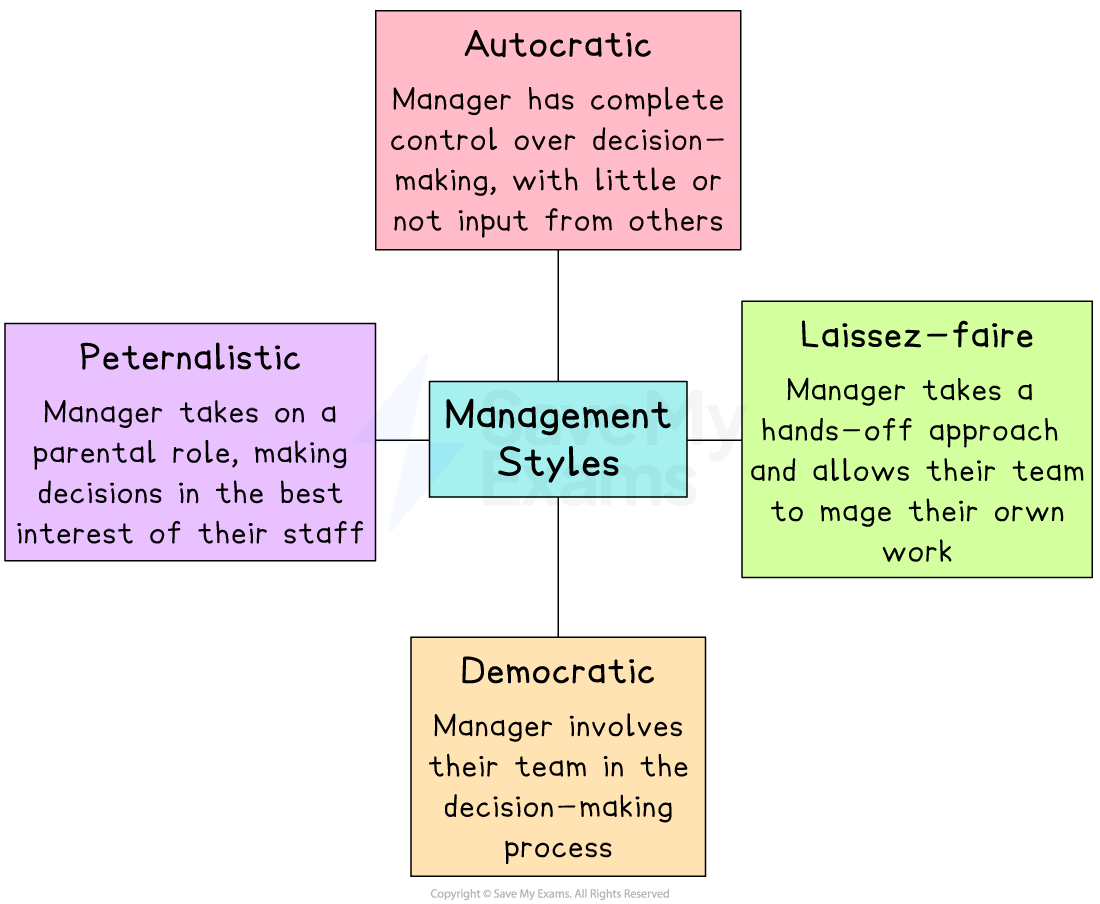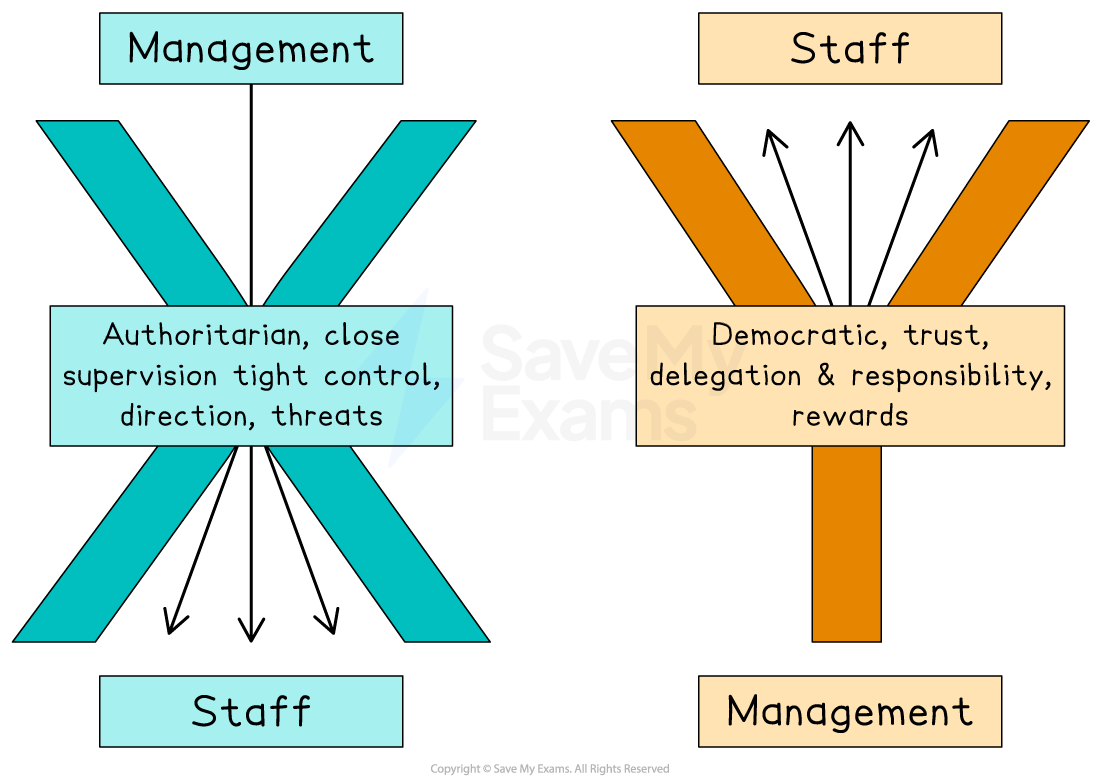Management Styles (Cambridge (CIE) A Level Business): Revision Note
Exam code: 9609
An introduction to management styles
Management styles are different approaches to leading and managing a team or business
An effective manager will be able to use a variety of styles depending on the situation to achieve the best results for the business
Common management styles

The choice of management style can be influenced by business circumstances, as well as its nature and size
Autocratic management
An autocratic manager holds absolute power and authority over a business
The manager makes decisions without seeking input or agreement from others
They typically expect strict obedience and compliance from their subordinates
Autocratic managers often have complete control over the decision-making process
They set the direction and goals of the business
They do not usually consider the opinions, ideas, or expertise of their team members
Their decisions are generally not open to discussion or debate
Situations where autocratic management is effective
Situation | Explanation |
|---|---|
Crisis situations |
|
Hierarchical organisations |
|
Time-sensitive projects |
|
Inexperienced or unmotivated teams |
|
Maintaining order and discipline |
|
Autocratic management has drawbacks, including
Reduced employee morale as workers have no input into decision-making
Limited creativity, as employees are required to follow strict instructions and are closely monitored
Lack of input from team members restricts an important source of problem-solving ideas and innovation
Paternalistic management
Paternalistic managers assume a 'fatherly' role towards their subordinates, acting in a protective and authoritarian manner
The manager makes decisions for employees while also showing concern for the well-being and development of subordinates
The manager takes on responsibility for the welfare of their employees
They may provide guidance, support, and resources to ensure the success of their employees
Huawei’s Ren Zhengfei is viewed as a paternalist who has shaped the businesses culture with well-defined goals, employee devotion and absolute obedience in return for highly competitive pay and opportunities for staff to buy shares in the company
Paternalistic management can create a sense of security and support among employees, increasing their loyalty and reducing staff turnover
It can also be perceived as controlling and limits creativity and innovation within a business
It may create a dependency on managers, which restricts personal growth and professional development among employees
Democratic management
Democratic managers actively involve employees in the decision-making process and encourage discussion, though they have the final say
Consultation, collaboration, delegation and teamwork are common features of democratic management
This management style is most effective in organisations with skilled, experienced and creative employees
Evaluation of democratic management
Advantages | Disadvantages |
|---|---|
|
|
Laissez-faire management
Laissez-faire managers play a minimal role in directing their business team
They allow subordinates significant autonomy and freedom in making decisions and completing tasks
Laissez-faire management is most appropriate where workers are highly skilled and self-motivated and require minimal supervision
Evaluation of laissez-faire management
Advantages | Disadvantages |
|---|---|
|
|
McGregor's Theory X and Theory Y managers
Douglas McGregor developed two contrasting theories that explained how managers' assumptions about what motivates workers affects the style of management they adopt
McGregor's Theory X and Theory Y

Assumptions of Theory X and Theory Y managers
Theory X | Theory Y |
|---|---|
|
|
Holding these assumptions about their workers means that managers are likely to adopt different approaches with their employees
Theory X and Theory Y approaches to management
Theory X managers closely supervise employees
They provide clearly defined tasks and the promise of higher pay or the threat of punishment as means of motivation
They may use autocratic measures, which can result in mistrust and resentment among employees
McGregor recognised that this approach can be appropriate, especially where workers lack experience or maturity
Theory Y managers establish a positive working environment
The organisation's objectives match employees' personal objectives
They develop a cooperative relationship with employees and allow them freedom to make and contribute to decisions
McGregor acknowledged that this theory isn't appropriate in every situation
It is an alternative to persuade managers to adopt a positive mindset when managing subordinates
Examiner Tips and Tricks
Your exam case study is likely to provide some hints about the management style adopted within a business. You may find that a manager adopts elements of different styles and should be able to explain why this may be. You may consider the business context, business objectives, the type of workers, timescales, and the level of risk in your explanation.

Unlock more, it's free!
Did this page help you?